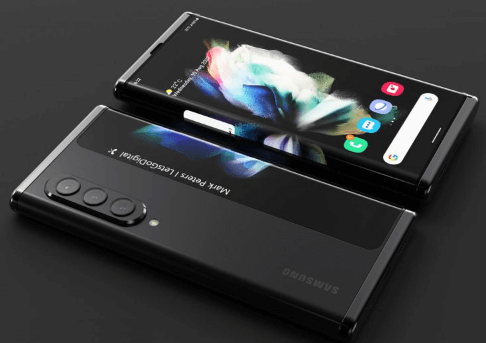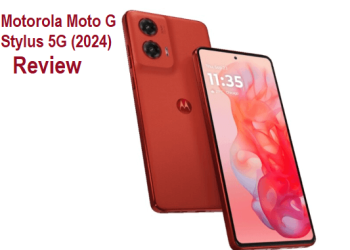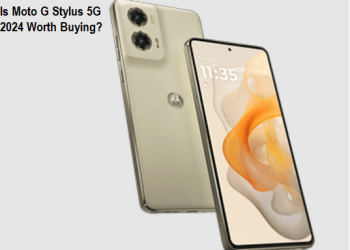It’s 2024, and all smartphones from popular brands such as Apple, Samsung, Motorola, Google, Oneplus, and Sony support 5G; these smartphones can deliver high data speeds across wireless networks in Rural Areas. Although they tend to be pricey, there are plenty of affordable 5G options.
What are the best 5G phones for Rural Areas in 2024?

Here, you can find a tremendous 5G-capable phone with good reception in areas with weak signals at a price that suits you.
1. Samsung Galaxy S24 Ultra
The Samsung Galaxy S24 Ultra, the 2024’s latest high-end 5G-enabled Android smartphone, is the best and safest choice for rural areas. With a sharper 5x optical zoom, a new faster processor, a familiar larger display, and 100x digital zoom, Samsung’s Ultra phone is still the best choice for mobile photographers who want plenty of screen real estate.
Galaxy S24 Ultra is also the first to feature Samsung’s new Galaxy A.I. features, including a tool to instantly translate text messages, phone calls, and Circle to Search. This new feature lets you launch a Google search for almost anything by drawing a picture.
This is one of the cell phones. There is a circle around it. Like the previous two generations, the Galaxy S24 Ultra has a built-in S Pen for those who like to jot down notes or doodle. Perhaps best of all, Samsung has committed to updating these devices to new versions of Android for seven years. That means you won’t feel like it’s too late.
Nonetheless, there are some significant drawbacks to consider. This phone is expensive, so look for trade-in discounts if you plan to upgrade. You plant high prices, hoping Samsung will add specific Galaxy A.I. features. Perhaps there will also be a function that utilizes the S Pen.
Galaxy A.I. is the same as all Galaxy S24 devices and will soon launch on the Galaxy S23 lineup, so there’s no need to splurge on Samsung’s top-of-the-line phones if that’s all you care about.
It may be Samsung’s most expensive non-foldable phone, but the Galaxy S24 Ultra is a powerful handset. It has one of the best processors among Android phones today; a 5G helps rural areas get good reception. It has a massive battery and a stacked quad-lens camera setup.
2. Oneplus 12
OnePlus’ new 5G phone can go from empty to fully charged in less than 30 minutes thanks to 80-watt charging. The United States is a perk that can help you if you forget your charger ahead of a long day. It runs on Qualcomm’s Snapdragon 8 Gen 3 processor, so it feels fast and snappy when playing games or scrolling through the interface.
The OnePlus 12’s 4,500 nits peak brightness makes the screen noticeably brighter than competitors like the iPhone 15 Pro Max and Samsung Galaxy S24 Ultra, making it ideal for outdoor Rural Areas users.
There is room for it when it comes to the camera. While photos taken with the Plus 12 are decent, the night shots look too dark, and the optical zoom is quite spot-on.
It’s also worth noting that the OnePlus 12 will receive software updates for four years. That’s fine for 2024, but Google and Samsung now offer seven years of Android updates, keeping those devices up-to-date for longer.
3. Apple iPhone 15 Pro Max
The iPhone 15 Pro Max is one of the best phones on the market from a wireless standpoint. This includes C-band, sub-6 GHz, and mmWave 5G spectrum and works well with all major and minor carriers in the U.S. and international wireless networks.
It also provides unrivaled LTE 4G coverage in areas where 5G is unavailable. It also has an unavailable, great battery life, the best camera ever on an iPhone, and slick software.
If you need the best-performing 5G phone on the market and an overall good phone, the iPhone 15 Pro Max is the device for you.
4. Google Pixel 7a
The Pixel 7a is one of our favorite budget devices, remembering that the unlocked-remember supports sub-6 5G. If you want a faster mmWave, you must buy one directly through a compatible carrier. The Pixel 7a has the same Tensor G2 as the Pixel 7 and the same 8 G.B. of RAM. The Pixel 7a is very similar to the flagship Pixel 7a but has a few drawbacks.
1-inch OLED has a refresh rate 90Hz, but it’s not as good as the Pixel 7 or the similarly priced Galaxy A54 5G. The design is also plastic but quite similar at first glance.
What’s great about the standard Pixel 7 is its camera. So what about Pixel 7a? The budget Pixel doesn’t have quite as good cameras. However, the primary 64MP shooter and 13MP are still solid performers with good colors and white balance, and many core features like Night Sight and Magic Eraser are also present.
The big present of the Pixelxel 7a is its battery life. Even with a few settings turned off, like the 90Hz refresh rate, I found it very difficult to use the Pixel 7a all day. The charging speed isn’t the fastest, either, because it takes 1 hour and 46 minutes from zero to full charge.
There’s also 7.5W wireless charging, but it’s pretty slow, so you shouldn’t rely on it as your primary charging method. The Pixel 7a is a great budget phone for 5G action. Just know that you can’t do it without making small sacrifices.
5. Samsung Galaxy A54 5G
The Samsung Galaxy A54 5G is one of Samsung’s more affordable phones. The A54 features a powerful battery and a triple rear camera setup. The A54 is more of a budget phone, but it’s not looser. It also comes with five years of security updates and four major operating system updates, so you won’t need to replace it for several years.
The Galaxy A54 is one of the cheapest phones you can buy from Samsung, but it still packs some great. However, it’s like 5G connectivity, a decent multi-rear camera setup, solid battery life, and enough power for your everyday essentials. It looks good and is one of the few phones that lets you expand its built-in storage using a microSD card.
6. Google Pixel 8 Pro
Google Pixel 8 Pro supports 5G and 4G networks, advanced Wi-Fi, GPS, and excellent Bluetooth. It also has fantastic software, a test mobile camera, decent battery life, and some delightful AI-assisted extras.
The Google Pixel 8 Pro is for those who want the best Android phone with 5G at an affordable price for rural areas.
Is it worth buying a 5G phone in rural areas?
There are no downsides to buying a 5G-enabled phone in rural areas. You will enjoy powerful advanced network coverage, download speeds, and unique features like cameras and Super H.D. screens. The sands of towns and cities in the USA, U.K., and Canada have 5G coverage, so you can benefit from superior connectivity wherever and whenever you want. However, no applications leverage the power of 5G technology.
Frequently Asked Questions
What is a 5G phone?
5G phones have new hardware that requires connectivity to 5G networks. Even if 5G isn’t available in your area. 5G brings new possibilities and services that only 5G-enabled devices can leverage, including faster speeds, lower latency, and the ability to handle more connections.
What is the difference between 4G phones and 5G phones?
5G is the latest advancement in wireless network technology. 5G allows larger amounts of data to be transmitted more efficiently than 4G LTE. This means strong network stability, faster downloads, and support for more connected devices than ever before. 5G has the potential to benefit everything from entertainment and gaming to education and public safety.
Are 5G phones better than 4G phones?
Technically not. A smartphone’s cellular connectivity doesn’t determine whether one phone is better. Supporting 5G will help future-proof your phone as carriers continue to roll out and upgrade their towers with 5G. Most phones now have 5G support, so there’s no way to compare them to 4G phones.
Why does my phone say LTE instead of 5G?
If you have a 5G phone that says LTE in the top right, that’s likely in an area where 5G access is limited or unavailable. All 5G phones default to LTE when 5G networks are available.
What is 5G U.C. on my phone?
Some networks use the term 5G UC. to refer to the fastest 5G speeds, Ultra Capacity 5G. This is typically seen when connected to mid-band or mmWave 5G.
Will 4G phones work on 5G networks?
No, unfortunately, that is not the case. To connect to a 5G network, your phone must be designed specifically with 5G in mind.
Will 5G phones work on 4G networks?
All current 5G-capable phones can use 4G and 5G technologies.
Can 5G replace Wi-Fi?
While 5G could certainly replace Wi-Fi technology, it likely won’t. 5G and Wi-Fi will coexist for as long as anyone can expect. Wi-Fi and 5G elements than the competition. 5G network rollout that sets out a strategy for how organizations should evolve their infrastructure. For most and all network providers, 5G can help solve many of the challenges typically associated with Wi-Fi deployments.
Do you need 5G?
Most certainly, 5G will deliver networks that are 100 times faster than 4G. But it’s not just about bandwidth upgrades. Various sectors worldwide can enjoy lower latency, more connected devices, and support for various technological advancements.







